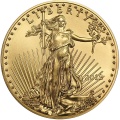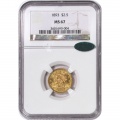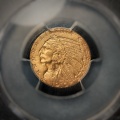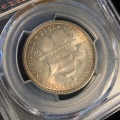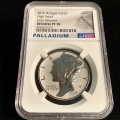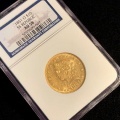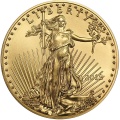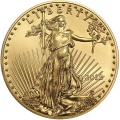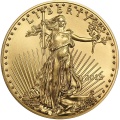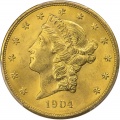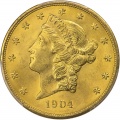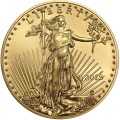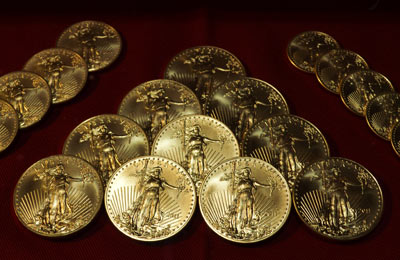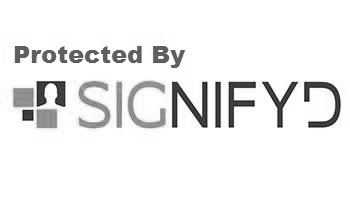October 2025 - Week 4 Edition
Gold Sees a Much-Needed Price Correction, So we can “Buy on Dips”!
On Tuesday, October 21st, investors sold off gold by over $200 per ounce (-5%). Is this cause for concern?
No. For several months now, I have wondered why gold has not suffered any significant price correction like this during a year of 50%+ price gains – the best yearly performance by gold in any full year since 1979, when gold more than doubled. In recent months, I have spoken with many other professionals in the gold industry about “What’s keeping this gold market fueled? Where is the demand coming from? Why has there been no big price correction yet?”
I’ve expected this week’s correction for a long time now and I am relieved that it has finally arrived, giving gold investors a buying opportunity. Always remember, “Buy on the dips.”
But first, let me explain why I think this buying window is narrow and temporary, and why gold will likely continue rising the rest of this year and into 2026. Along the way, I’ll tell you where the new demand is coming from and why this new demand source is likely to keep growing.
Where is the New Gold and Silver Demand Coming From?
The major new source of gold and silver demand this year is from mainstream investors and large banking and brokerage institutions. They call it “the debasement trade.” It is rooted in the fact (and fear) of rising federal government deficits, which will erode the value of the dollar and other major currencies over the long term. This “debasement trade” calls for investors to move large portions of their capital out of assets that rely on government promises like fiat currencies and Treasury bonds and into hard assets, like gold and silver, which have a finite supply and keep their purchasing power.
According to CNBC, the leading financial TV channel, “The debasement trade is a bet that government borrowing and money printing will erode the value of the U.S. dollar, so investors are shifting cash into assets like gold, crypto, stocks and real estate that can hold their value.”
This debasement trade does not mean investors are selling stocks to buy gold. Instead, they are selling bonds and currencies for the most part, since gold is now a currency crisis hedge, not an alternative to stocks. Usually, stocks and gold move in opposite directions but they have risen in tandem this year.
CNBC mentions “crypto,” but Bitcoin has been flat in the last three months, as gold has soared. The problem with cryptocurrencies is not just Bitcoin. There are hundreds of other actively trading cryptocurrencies and 37 million of them overall, as of September 2025. It seems almost everyone (even President Donald Trump) is trying to use the alchemy of computerized “mining” of computer-generated non-coins.
Ed Yardeni, whom we quoted here recently, wrote last week that “Gold is The New Bitcoin.” By that, he means investors are “concluding that gold offers greater protection from geopolitical risks than bitcoin, which is more like a risk-on speculative vehicle and has been weak recently.” He also wrote, “We now think the gold price could reach $5,000 an ounce by year-end 2026 and possibly $10,000 by the decade’s end, if not before.” That parallels my own recent gold price projections of as much as $7,000 in the next few years.
The Rising Volume of North American Gold Buying in 2025
The World Gold Council provides valuable statistics on the power and scope of this new trade, based on eroding currency values. Until 2025, U.S. investors were net sellers of gold, while the rest of the world was buying more gold. This year, however, U.S. investors entered the gold market big time.
Daily trading volume for gold futures recently climbed to an 18-month high: On October 9, the most-active Comex gold futures contract saw trading volume hit 448,407 contracts in one day, the highest daily volume since April 12, 2024. On the same day, trading volume for the largest gold ETF (SPDR Gold Shares) rose to nearly 33.7 million shares, the highest volume day since April 22, 2025.
Ironically, the central banks that are debasing their own currencies continue to buy gold in record amounts. That means private traders are vying with large institutions for the same limited supply of gold, pushing prices higher. Neither demand source is likely to dry up, as currencies keep losing value.
In the third quarter, the WGC says, gold buying in North America surpassed Asian buying volume for the first time in this decade. In the WGC’s third-quarter survey (published October 7th), they said that global gold ETF demand recorded its “strongest quarter on record,” at $26 billion. North American investors bought most (62%) of that total, $16.1 billion, representing the largest Q3 and second largest quarter on record. European funds also saw strong buying, while Asian buying slowed last quarter.
By the end of last quarter, the WGC said that global gold ETFs’ total assets under management (AUM) reached $472 billion, up 23% quarter over quarter. That is a record high. I might add that the U.S. Dollar Index, primarily weighted against the euro and yen, was down almost 10%, year-to-date.
The 2025 fiscal year federal deficit was recently tabulated at $1.8 trillion, the same as during President Joe Biden’s last full year, 2024. Since there is little chance that the U.S. and other leading governments will reduce their deficits and stop overspending, the current “debasement” trade probably has a very long shelf life. Investors are smart enough to know that Modern Monetary Theory (MMT), first adopted first in Europe and now in America, states that governments can keep overspending as long as they repay those debts in currencies created by the same government. That is a sure recipe for debasement.
That’s why I repeat, “buy on the dips.” Even with this week’s correction, gold is still up over 50% this year. I might add that with the holiday season approaching, we have several great ideas for silver rounds with specific themes, ideal for teaching children and grandchildren the value of real money. Silver and gold coins and numismatic rarities are the primary engines for portfolio growth and protection, plus numismatic coins have the added value often not sinking when their underlying metal price declines. With Diwali currently being celebrated in India and Christmas and the Chinese New Year ahead, it’s likely gold demand will see a bump, as it is a favorite for gift-giving.
Call your professional account representative today to learn about some winning ways to avoid “dollar debasement.”

Gold is down this week but it is still strong. Gold first pierced $4,000 per ounce on October 8th, just two weeks ago, and it remains over $4,000, so not much ground has been lost. However, on Tuesday, October 21st, gold opened at a record high $4,393 on the futures market before a sell-off to $4,093 and then rising again. Silver followed the same pattern. Silver first breached $50 per ounce on Monday, October 13th. Then it dipped back to $48 this Tuesday, its price as of October 10th. Platinum also dropped by the same percentage, as silver and platinum trade more as a hedge on currencies now than for their traditional industrial usage, which provides their core demand.
Important Disclosure Notification: All statements, opinions, pricing, and ideas herein are believed to be reliable, truthful and accurate to the best of the Publisher's knowledge at this time. They are not guaranteed in any way by anybody and are subject to change over time. The Publisher disclaims and is not liable for any claims or losses which may be incurred by third parties while relying on information published herein. Individuals should not look at this publication as giving finance or investment advice or information for their individual suitability. All readers are advised to independently verify all representations made herein or by its representatives for your individual suitability before making your investment or collecting decisions. Arbitration: This company strives to handle customer complaint issues directly with customer in an expeditious manner. In the event an amicable resolution cannot be reached, you agree to accept binding arbitration. Any dispute, controversy, claim or disagreement arising out of or relating to transactions between you and this company shall be resolved by binding arbitration pursuant to the Federal Arbitration Act and conducted in Beaumont, Jefferson County, Texas. It is understood that the parties waive any right to a jury trial. Judgment upon the award rendered by the Arbitrator may be entered in any court having jurisdiction thereof. Reproduction or quotation of this newsletter is prohibited without written permission of the Publisher.



